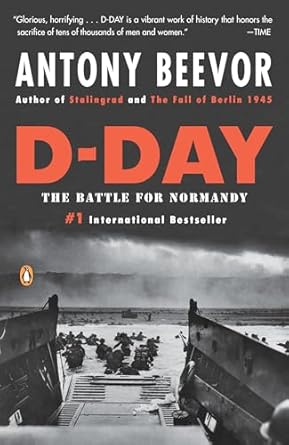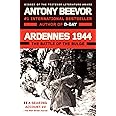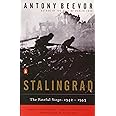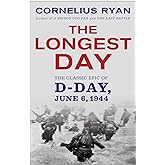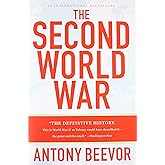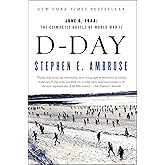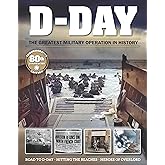
Enjoy fast, free delivery, exclusive deals, and award-winning movies & TV shows with Prime
Try Prime
and start saving today with fast, free delivery
Amazon Prime includes:
Fast, FREE Delivery is available to Prime members. To join, select "Try Amazon Prime and start saving today with Fast, FREE Delivery" below the Add to Cart button.
Amazon Prime members enjoy:- Cardmembers earn 5% Back at Amazon.com with a Prime Credit Card.
- Unlimited Free Two-Day Delivery
- Streaming of thousands of movies and TV shows with limited ads on Prime Video.
- A Kindle book to borrow for free each month - with no due dates
- Listen to over 2 million songs and hundreds of playlists
- Unlimited photo storage with anywhere access
Important: Your credit card will NOT be charged when you start your free trial or if you cancel during the trial period. If you're happy with Amazon Prime, do nothing. At the end of the free trial, your membership will automatically upgrade to a monthly membership.
Buy new:
-44% $13.99$13.99
Ships from: Amazon.com Sold by: Amazon.com
Save with Used - Good
$8.49$8.49
Ships from: Amazon Sold by: Empire Media Books

Download the free Kindle app and start reading Kindle books instantly on your smartphone, tablet, or computer - no Kindle device required.
Read instantly on your browser with Kindle for Web.
Using your mobile phone camera - scan the code below and download the Kindle app.



 Audible sample
Audible sample D-Day: The Battle for Normandy Paperback – Illustrated, September 28, 2010

Explore your book, then jump right back to where you left off with Page Flip.
View high quality images that let you zoom in to take a closer look.
Enjoy features only possible in digital – start reading right away, carry your library with you, adjust the font, create shareable notes and highlights, and more.
Discover additional details about the events, people, and places in your book, with Wikipedia integration.
Purchase options and add-ons
Renowned historian Antony Beevor, author of Stalingrad and The Battle of Arnhem, and the man who "single-handedly transformed the reputation of military history" (The Guardian) presents the first major account in more than twenty years of the Normandy invasion and the liberation of Paris. This is the first book to describe not only the experiences of the American, British, Canadian, and German soldiers, but also the terrible suffering of the French caught up in the fighting. Beevor draws upon his research in more than thirty archives in six countries, going back to original accounts and interviews conducted by combat historians just after the action. D-Day is the consummate account of the invasion and the ferocious offensive that led to Paris's liberation.
- Print length624 pages
- LanguageEnglish
- PublisherPenguin Books
- Publication dateSeptember 28, 2010
- Dimensions5.5 x 1 x 8.5 inches
- ISBN-100143118188
- ISBN-13978-0143118183
The Amazon Book Review
Book recommendations, author interviews, editors' picks, and more. Read it now.
Frequently bought together
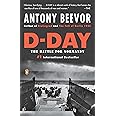
Customers who viewed this item also viewed
 Sainte-Mère-Eglise was thus the first town in France to be liberated.Highlighted by 185 Kindle readers
Sainte-Mère-Eglise was thus the first town in France to be liberated.Highlighted by 185 Kindle readers Churchill once remarked that the Americans always came to the right decision, having tried everything else first.Highlighted by 176 Kindle readers
Churchill once remarked that the Americans always came to the right decision, having tried everything else first.Highlighted by 176 Kindle readers ‘The only people on this beach are the dead and those that are going to die - now let’s get the hell out of here!’Highlighted by 98 Kindle readers
‘The only people on this beach are the dead and those that are going to die - now let’s get the hell out of here!’Highlighted by 98 Kindle readers
Editorial Reviews
Review
"A dramatic, important, and instructive story, and Beevor tells it surpassingly well."—The Washington Post
"Where the book really scores is in its eye for the operational detail and its vivid reconstructions of the experience of battle, as unavoidable courage mixes with arbitrary tragedy."—Lawrence Freedman, Foreign Affairs
"Beevor excels in recounting, from interviews with veterans and from the testimony of soldiers' letters and reports, just what a bloody campaign the invasion was... Beevor is especially gripping in his account of the U.S. 120th Infantry... Beevor is to be commended for emphasizing a troubling theme: the inferiority of much Allied equipment."—The Wall Street Journal
"His account of atrocities on both sides, of errors committed and of surpassing bravery makes for excellent - though often blood-soaked - reading. Beevor gets better with each book."—Kirkus Reviews (starred review)
"Beevor has written an in-depth campaign history...that should be read by beginners and experts alike."—Library Journal
About the Author
Product details
- Publisher : Penguin Books; Reprint edition (September 28, 2010)
- Language : English
- Paperback : 624 pages
- ISBN-10 : 0143118188
- ISBN-13 : 978-0143118183
- Item Weight : 1.2 pounds
- Dimensions : 5.5 x 1 x 8.5 inches
- Best Sellers Rank: #162,600 in Books (See Top 100 in Books)
- #157 in French History (Books)
- #1,268 in World War II History (Books)
- #3,851 in World History (Books)
- Customer Reviews:
About the author

A regular in the 11th Hussars, Antony Beevor served in Germany and England. He has had a number of books published and his book Stalingrad was awarded the Samuel Johnson Prize, the Wolfson History Prize and the Hawthornden Prize. Among the many prestigious posts he holds, he is a fellow of the Royal Society of Literature.
Photo by Bengt Oberger (Own work) [CC BY-SA 4.0 (http://creativecommons.org/licenses/by-sa/4.0)], via Wikimedia Commons.
Customer reviews
Customer Reviews, including Product Star Ratings help customers to learn more about the product and decide whether it is the right product for them.
To calculate the overall star rating and percentage breakdown by star, we don’t use a simple average. Instead, our system considers things like how recent a review is and if the reviewer bought the item on Amazon. It also analyzed reviews to verify trustworthiness.
Learn more how customers reviews work on AmazonCustomers say
Customers find the book compelling, interesting, and entertaining. They appreciate the detailed information and enlightening facts. Readers describe the narrative quality as well-told and brings the subject to life. They praise the writing style as clear, concise, and direct. Opinions are mixed on the maps, with some finding them superb and appropriate, while others say they're hard to read.
AI-generated from the text of customer reviews
Customers find the book compelling, interesting, and entertaining. They say it conveys highly successful, if not ultimately doomed, information. Readers also mention the book keeps their attention.
"A wonderful read, even for those who have not previously studied the Battle...." Read more
"...A great read, and one you will want to read more than once." Read more
"...How refreshing! Great Book ,easy reading and very historically accurate." Read more
"...is easy to read, informative, and if you can say this about war, entertaining...." Read more
Customers find the book full of detailed information about the events and the utterly exhaustive research. They say it tells some interesting and enlightening facts. Readers also appreciate the level of detail and the author's outstanding job of presenting the strategies and movements of units.
"...'s book, like his others on aspects of World War II, is the utterly exhaustive research -- nine years on this book alone -- that is typical of all..." Read more
"Loved the level of detail. Read it and you'll get D-Day from ally perspective...." Read more
"Beevor's work is worth reading as an introduction to the invasion of France by the allied powers, the United States and United Kingdom, mainly, with..." Read more
"...The amount of information to be gleaned is astounding, but if you manage to get through the maze with the whole story intact in your mind you're a..." Read more
Customers find the narrative quality interesting. They say the author brings the subject to life with fascinating single chapters. Readers also appreciate the human experiences and anecdotes.
"...Beevor knows what he's talking about and he tells the story well." Read more
"...There are also fascinating single chapters on the July 20, 1944, assassination attempt on Hitler, and the liberation of Paris, that offer brief but..." Read more
"...How refreshing! Great Book ,easy reading and very historically accurate." Read more
"It's a thin book, 5 years "out of date", though still quite suitable for a historical area that doesn't change much over time...." Read more
Customers find the writing style well-written, easy to read, and informative. They say the book is smoothly told with viewpoints of the private soldier up to Ike, De Gaulle, and Churchill. Readers also mention the style is clear, concise, and direct.
"...Smoothly told with viewpoints of the private soldier up to Ike, De Gaulle and Churchill. Highly recommended" Read more
"...He writes in a clear and effective style in which the reader feels Beevor gives his subjects a complete treatment with a certain economy of words...." Read more
"...How refreshing! Great Book ,easy reading and very historically accurate." Read more
"...Beevor is easy to read, informative, and if you can say this about war, entertaining...." Read more
Customers have mixed opinions about the maps in the book. Some mention they're superb, while others say they're hard to read and lack sufficient detail.
"...The maps disappointed me. They were small and definitely not suitable for navigation...." Read more
"...of this book, as with all of Beevor's titles I have read, is the superb maps.)..." Read more
"...the disadvantage in buying the Kindle version: There is no easy way to refer to the maps -- or even see them very well, they're so small and dim on..." Read more
"...THe only thing that frustrated me was the maps...." Read more
Customers find the book difficult to put down. They say it's easy to understand and makes them feel as if they were there. However, some readers also mention that the book is informative but also tedious.
"...It was very easy to understand and almost made me feel as if I were there watching the events unfold...." Read more
"A page turner from the getgo. Very difficult to put down as the author is writing about a time I remember well but was only a child watching the..." Read more
"...and battalions straight was daunting, the book is fast read and hard to put down." Read more
"I bought it for my husband's birthday. He read it in two days. Couldn't put it down." Read more
-
Top reviews
Top reviews from the United States
There was a problem filtering reviews right now. Please try again later.
The truly unique thing about Beevor's book, like his others on aspects of World War II, is the utterly exhaustive research -- nine years on this book alone -- that is typical of all his works. Working with previously classified Allied and German military documents, maps and combat action reports, he pieces together a masterful work that views the D-Day and its aftermath from both the Allies' and the Germans' point of view -- with extensive quotes from battle and after-action reports and other previously classified documents. A great read, and one you will want to read more than once.
The ability to "take the role of the other," as a sociologist described it, may seem like a small thing. Anybody can do it. Yet even military historians have shown a lack of that ability.
The late Stephen Ambrose did a book on D-Day too, noting that the French civilians of Normandy and Brittany were more sullen that the civilians of the South. He offered no explanation and left us with the assumption that there are regional differences in national character.
But the fact is that the French civilians of northern France had plenty of reasons to be resentful, as well as many reasons to be grateful. Except for the French resistance (made up of fractious elements, much like the Syrian insurgents today), the French had lived in reasonable comfort among the Germans, whose orders regarding public behavior were strictly enforced. And, after all, we had just bombed the hell out of Normandy. The critical city of Caen had been literally flattened by bombs and artillery to no particular tactical advantage. Crops were devastated and the fields dotted with the rotting carcases of cows.
And by the time the Allies reached Paris -- well, let me quote Beevor.
"The Petit Palais had been taken over, with a large sign announcing the distribution of free condoms to U.S. troops. In Pigalle, rapidly dubbed 'Pig Alley' by GIs, prostitutes were coping with over 10,000 men a day. The French were also deeply shocked to see U.S. Army soldiers lying drunk on the pavements of the Place Vendôme. The contrast with off-duty German troops, who had been forbidden to even smoke in the street, could hardly have been greater."
Separate chapters are given over to the attempt to assassinate Hitler and to the liberation of Paris. That second one, the liberation, would have been hilarious if it hadn't been so serious and at times lethal. You have the U.S. Army arguing with the organized and uniformed French troops for the honor of being the first to enter Paris. Then you had the French generals, LeClerc and DeGaulle, arguing with each other. Then you had the civilian French resistance arguing with the uniformed French army. Then you had the leaders of the factions within the resistance -- the nationalists, the communists, the marginal groups -- arguing with each other. Although in retrospect it may seem unlikely, DeGaulle was the most steady and reasonable figure. That will give you some idea of how complicated this strictly symbolic issue was.
I won't go on about it. Most other reviewers have hit the high spots of the book and of Beevor's writing skills. Beevor knows what he's talking about and he tells the story well.
Most people know that the June 1944 Normandy landings were a huge gamble that could have gone badly (indeed, Eisenhower, supreme Allied commander in Europe and the one who gave the go-ahead for the D-Day landings on June 6, had prepared a short speech to be delivered in the very real event that the American, British, and Canadian armies failed to establish a beachhead), and the actual D-Day landings at Utah, Omaha, Gold, Juno, and Sword beaches have been covered in the most minute detail (by Cornelius Ryan, Max Hastings, and others)in the last 65 years. As important as getting a toehold on these beaches was in the first few days (and as fantastic a logistic feat the June landings were), the great majority of the battles (and casualties)occurred in the next two months as the Allied and German armies clashed in the most bitter fighting in the hedgerow ("bocage") and hill country just inland of the beaches. Gains and losses in these battles were often measured in hundreds of yards, while the British and American casualty-rates were double those of the Soviet forces (2000 losses per division per month in the West, as opposed to 1000 per division on the Eastern Front) in the comparable timeframe, even as the Soviet armies were rolling the Germans back hundreds of miles in their massive Operation Bagration offensive.
I began Beevor's book particularly interested in the numerous and successive British offensives in the seemingly compact eastern sector of the Allied front (Operations Epsom, Goodwood, and Totalize) that appeared to be signal failures despite the massive human and materiel resources (including hundreds of RAF and USAAF bombers that carpet-bombed the frontlines prior to Goodwood and Totalize) and where gains were maybe a few miles at best at the cost of hundreds of tanks and thousands of men. As with all his battle-coverage, Beevor is excellent at narrating these desultory battles in adequate detail (including identifying the units on both sides) without getting bogged-down in any kind of rote recitation. (Also, a major virtue of this book, as with all of Beevor's titles I have read, is the superb maps.) In Epsom, Goodwood, and Totalize, Gen. Montgomery always promised a major breakthrough, only to (characteristically, of course) seek to shift the blame to other Allied commanders when these operations failed to meet their most modest goals. After five years of war, the British were at the end of their materiel and manpower reserves; they had failed to take enough territory inland of the Gold, Juno, and Sword beaches to build airfields for tactical fighter support; they were facing the majority of SS divisions on the Normandy front along a very short frontline; their Churchill and Cromwell tanks were far inferior to German tanks; the hedgerow and hill country of Normandy severely limited armored mobility and thus favored the defending Germans who also had large numbers of 88mm flak guns to kill Allied tanks; and it did not help that the heavy Allied bombers which were supposed to tear open the German frontlines prior to Goodwood and Totalize, made their bombing-runs perpendicular to the frontline rather than flying parallel to the front (in an effort to limit exposure to the many German flak batteries) and ended up hitting almost as many Allied ground forces as German troops.
To the west, the Americans faced the same difficulties in terms of limited mobility in the hedgerows (one American officer who had served in the Pacific compared bocage fighting to jungle warfare), superior German tanks and 88s, and fanatical resistance by German troops convinced that failure to push the Western Allies off the northern continent meant the inevitable end of the Reich. And it would be unfair to say the Americans initially fared much better than the British and Canadians, when U.S. troops were trapped in the hedgerows for a month after D-Day. However, the American forces were able to secure more territory (aided by airborne landings and paratroopers) inland of the beaches immediately after D-Day and were thus able to build fighter airfields within their beachheads; were successful in driving across the Contentin Peninsula to the Atlantic and the approaches to Brittany, and reducing the German forces northward and eventually capturing the port of Cherbourg; and, crucially, the Americans had vastly more manpower and materiel resources than the British.
As the British sector of the Normandy front bogged-down, and gains were measured in increments of five miles, Montgomery (conveniently) declared that his forces' function was now to tie-down the majority of the SS units in the eastern sector so that the Americans could achieve a breakout further west around the left flank of the German forces in Normandy. This indeed did occur in Operation Cobra, 25 July-1 August, 1944. When a Soviet general observing the stalemated British sector commented to a British general that Soviet forces faced many more German troops on the Eastern Front than the Allied forces faced in Normandy, the British commander retorted that the Russians faced the same number of German soldiers across many hundreds of miles of front in the East that the Americans and especially the British faced along a front of all of sixty miles. Again, Beevor rightly observes that (for a change) the fighting in Normandy was more ferocious than in the comparable period in the East. There is much truth in this observation.
Beevor also gives substantial coverage to the defending German forces in Normandy. These included both regular Wehrmacht army as well as many SS units, including both SS panzer corps and Hitler Youth divisions. While the Germans fought doggedly, often to the last man, inflicted heavy losses on the Americans and British for every mile gained, and specialized in quick and punishing counterattacks, I was struck, in reading Beevor's book, at the horrendous losses the Germans were suffering from the very beginning of the Normandy battles. The Germans had negligible air support for the duration of the fighting, and they were consequently pummeled by British and American fighters every daylight hour of every clear day. The reader very quickly appreciates how difficult these constant air attacks made it for German operations. Rommel (the German commander in Normandy in the early days after June 6) had been promised generous Luftwaffe aid in the event of any Allied landings, and when this air support did not materialize (there were not enough planes, pilots, or fuel), he quickly realized that (as he had experienced in North Africa) it was basically futile to try to throw the Allies back into the sea. The German mechanized forces (and even reserves of ground troops marching to the front from deeper inside France) could move only at night and had to remain hidden during the day. Though German troops were experienced and determined, they and their commanders quickly learned that this was no way to conduct a successful military campaign. This eventually culminated in late August 1944 in the slaughter from the air of tens of thousands of German troops in the Falaise Pocket when Allied forces decisively broke out and sent German armies reeling all the way back to Paris and the line of the Seine. However, even here it should be said that determined German resistance coupled with inept British /Canadian leadership, allowed many German troops to escape the Falaise Packet and subsequently be deployed against the Allies in the Ardennes in December 1944, and in Hungary in March 1945, in the last two German offensives of the war.
This is the third book by Antony Beevor that I have read (I have also read his book on the British defeat in Crete in 1941, and his "The Fall of Berlin" on the final German defeat in 1945), and I greatly enjoyed it. Beevor is clearly immersed in the primary (he researched in the relevant archives in North America and Europe) and secondary literature, yet his prose is not turgid or overly technical. He writes in a clear and effective style in which the reader feels Beevor gives his subjects a complete treatment with a certain economy of words. There are also fascinating single chapters on the July 20, 1944, assassination attempt on Hitler, and the liberation of Paris, that offer brief but masterly accounts of these more peripheral events.
Top reviews from other countries
Used copy was in Excellent condition too
Every page has its own details of the war, the book is written in such a simple way that reading becomes child play. Operation Overlord described in thin details, you almost have the feeling you are in the battlefield.


